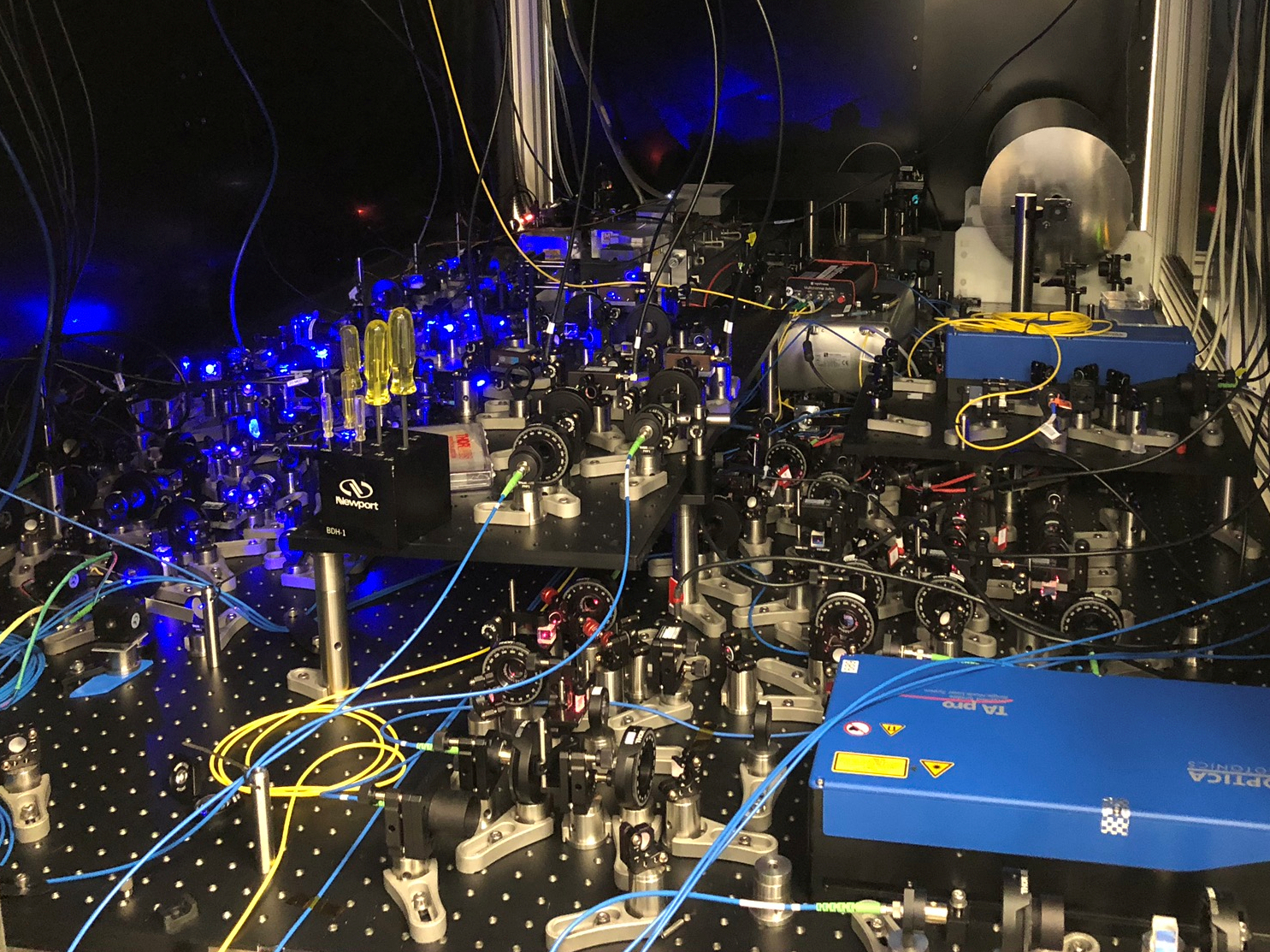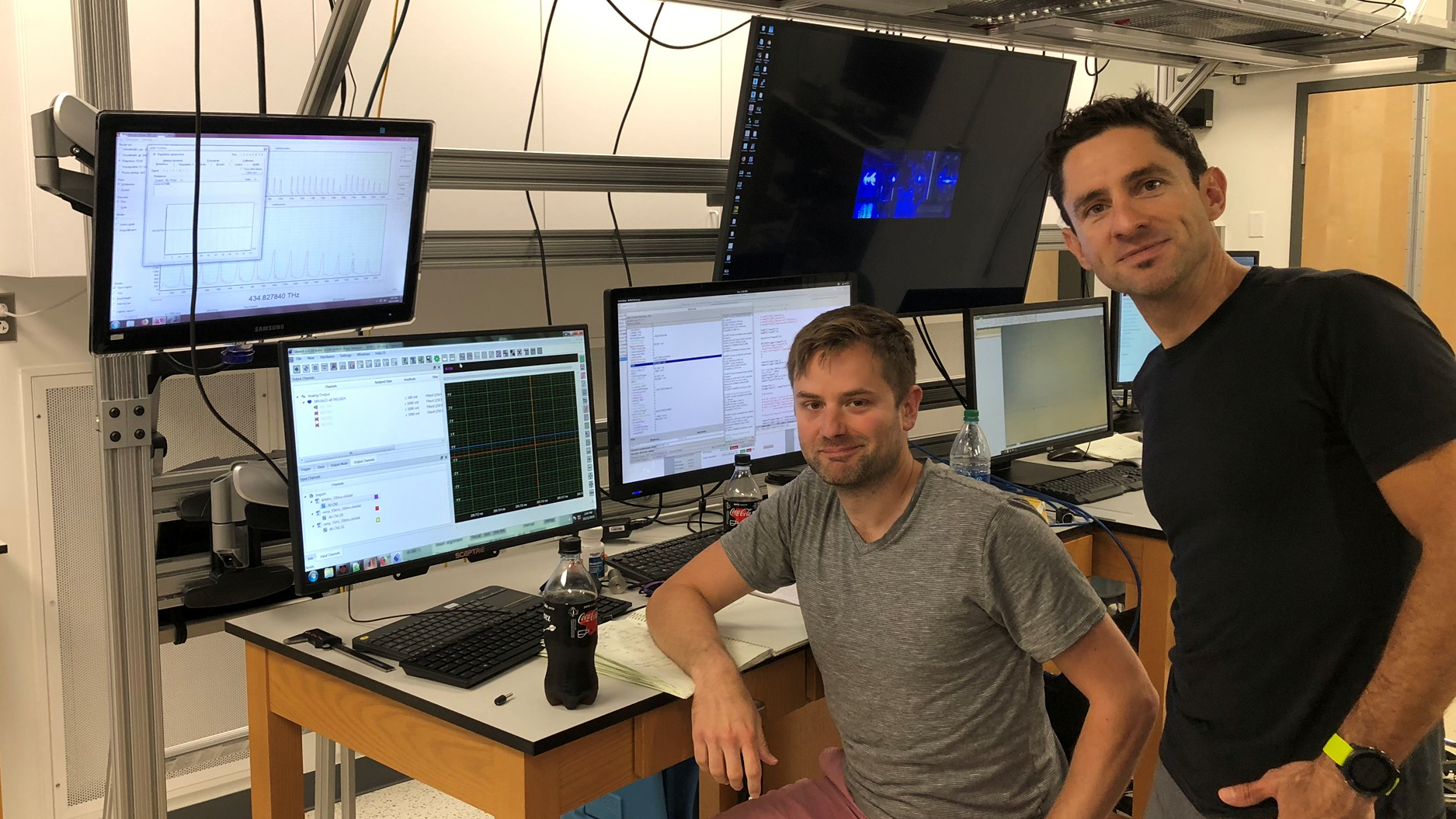AWG-card by Spectrum used to move around single atoms
How do you determine what is going on when you can’t actually see the components in the system you are investigating? This is the challenge when investigating the quantum behaviour of electrons in a lattice of ions. The solution being created by the Physics Department at the University of San Diego, California is to build a model that is slightly larger with observable components of single atoms moving in an optical lattice.
The challenge is to cool the atoms to near absolute zero and then move them into a triangular lattice formation using pulses of laser light, which have to be ultra-precise, with virtually no noise in the control signal for the laser beams. To achieve this, a Spectrum Instrumentation M4i.6622-x8 Arbitrary Waveform Generator is used.

The experiment with the vacuum chamber in the middle
The first step is to cool a few million strontium atoms to within a few hundred nano-degrees of absolute zero in a vacuum chamber. The next step is to move the ultra-cold atoms into a flat sheet like a pancake again using laser pulses.
Then, three lasers that are arranged in a plane at 120° from each other, are fired in turn to propel the atoms into synchronized triangle patterns. These dancing atoms are simulating the quantum behaviour of electrons in a lattice of ions.
“This gives us a model of quantum behaviour that we can observe with ultra-sensitive cameras as we subject it to changing conditions to see how our predicted result from computer modelling compares with reality,” added Dr. Barreiro, “which is something that you just cannot do at the electron level.”
For a size comparison, this modeling is working at 500nm sizes, whereas the electrons in a lattice is at the level of Angstroms. The precise and coordinated dance of the atoms in a triangular lattice is enabled by multiple triplets of laser light frequencies controlled by the Spectrum AWG using its multi-channel outputs.

The applications of this Blue-Sky basic research, which forms part of the second Quantum Revolution, include studying the quantum effects in materials for quantum computers and molecular structures for quantum chemistry that could be used to create novel medicines.
Oliver Rovini, Spectrum’s CTO, added: “University research departments around the world are one of our biggest markets as they need solutions that provide the quality and precision that we design into every aspect of our AWGs and digitisers. We have confidence in our products and include our industry leading, five years warranty.
"Also, being modular, our solutions can be precisely tailored to meet their exact needs and, importantly for long term projects, they can be adapted and enhanced by changing cards as needed. This is also why you will find our cards in organizations such as CERN and DESY where parts have to be relied on to work for years and years.”






